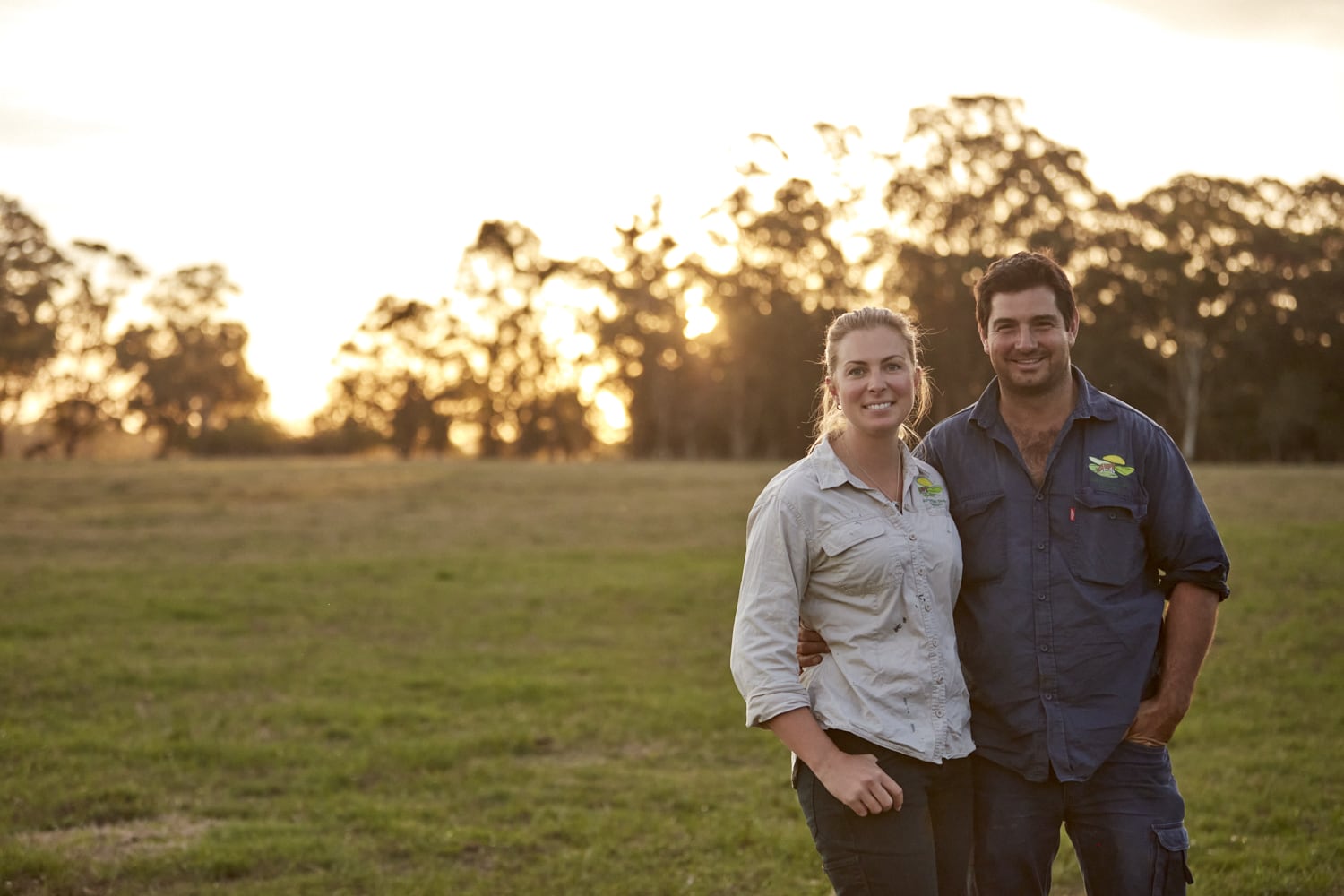Sandra Jefford
A certified organic dairy farmer from Clydebank, eastern Victoria.
Lifestyle
- What is the best part of your job?
There’s many great aspects to what I do. I work from home, with family and great staff. I have a lot of variety and challenges. We’re always updating our knowledge and trying new things. Dairy farming has been very challenging over the years, but overall, I wouldn’t want to do anything else. The best thing is seeing something new every day, like a baby calf, the difference rain makes, the first flowers on trees that we’ve planted or more milk on the vat.
Climate Change
- Have you noticed any significant changes to production due to a changing climate?
The 3 years of low rainfall in 2016 – 2019 was a difficult time in central Gippsland. It was very difficult to maintain pasture production, which meant we sold cattle (so we didn’t have to buy a lot of expensive animal feed). Therefore, milk production dropped and income declined. We’ve built up animal numbers again and will try to have more home grown fodder on hand to get us through extreme weather in the future.
- Are any farmers using seaweed to reduce methane produced from cows?
We feed our cows small amounts of dried seaweed on a regular basis, because it contains so many nutrients. We’re interested in knowing more about the Asparagopsis seaweed that reportedly reduces methane emissions, but it’s not readily available at the moment. Just a small amount of Asparagopsis is currently produced, so its use with cattle is still in the trial stage.
- How are farms and farmers going to adjust to the increased consumer demand, whilst accommodating for the changing climate?
As the world’s population increases, there is a need for more food. Some of that will come about by reducing waste – for example using the fruit or veg that are out of spec because they are too big, small or misshapen. As consumers, we also need to accept that produce with a blemish is ok – if we don’t want to see those marks, then more insecticides, fungicides etc. have to be used, and they’re probably not good for life in the soil, or our health.
Additionally, as food producers learn more about health soil, and we improve the soil, we can increase production, and reduce our overall input costs. One of the really exciting areas of interest is soil microbiology and how beneficial microbes can provide nutrients to plants, and also protect crops from disease. Other microbes help with soil structure and result in the soil holding more moisture, so the soil is not so badly affected by periods of no rain.
We are constantly reassessing what we do. As we look towards the future with more hot days and more erratic rainfall, we’re looking at what we should grow that will feed our cattle well, will make best use of the moisture we have, be easy to grow, and good for the soil.
Sustainability
- Is there any support from the government to help farmers take up sustainable practises?
The prices that farmers are paid for the food and fibre they produce are often not good enough to allow landowners to adopt all the sustainable practices that we’d like to adopt. So, both State and Federal governments occasionally offer incentives to land owners to adopt sustainable practices. For example, we’ve used money through our Catchment Management Authority to get dairy effluent water to a centre pivot irrigator, so the nutrients in the effluent water are diluted and spread over a large area of the farm.
We’ve also received a large grant through Victoria’s Energy Investment Plan through which we’ll change some of our irrigation pumps and dairy equipment so we use less power. Then we’re installing solar panels and wind turbines so we generate most of the power that we need on the farm. The benefits will include much lower carbon emissions and lower farm operating costs.
- What types of conservation methods do you use on your farm?
In recent years we’ve become a lot more aware of our responsibility to help protect nature. This started when West Gippsland Catchment Management Authority suggested we should fence off a wetland area to protect frogs that might be in the area. The land was not great for grazing, so we agreed to fence it off and stop cattle entering the area.
WGCMA recorded the sounds in that area last spring and after analysing the recording, have told us we have 8 types of frogs – 2 of which are endangered.
We still have some other areas of water to fence off, but now we know how important clean water is for tadpoles and other aquatic life – as well as animal health, that’s becoming a higher priority.
We’re trying to plant native grasses, shrubs and trees every year. There are so many benefits – shade and shelter for cattle, habitat for insects that help with pollinating pasture, habitat for birds and small mammals.
We find that most projects that will improve our natural resources also make economic sense. It’s just a matter of finding time to do them, and the cash we need up front.
We don’t know much about the wildlife on our land, and that’s something we’d like to learn more about, so we can measure whether our practices are leading to greater biodiversity.
- What are the benefits of regenerative farming, for the future of the climate and fertile land availability?
Regenerative farming techniques can potentially help take carbon out of the atmosphere, improve soil moisture and thus restore the small water cycle. By improving the soil this also improves the viability of the farm.
Some of the principles of regenerative farming are:
- Minimal cultivation of soil
- Keep the soil covered and plants growing – even if they’re weeds
- Diversity of plants is better than a monoculture
- Integrate animals into the farming system
Organics
- Would you ever consider growing organically?
We’re one of maybe 70 or 80 certified organic dairy farms in Victoria. We do this because we believe in the value of organic food systems. Organic farming is based on healthy soil, so no use of synthetic fertilisers. There are natural soil improvers that we’re allowed to use, such as natural lime, gypsum, compost and trace elements. We also use beneficial microbes and feed them with liquid fish and kelp products, just like many people do in their gardens. By helping the soil microbes, we don’t have noticeable problems with soil-borne pests or diseases and don’t need fungicides, insecticides etc. that would kill some of the good organisms.
Organic farming does tend to be more labour intensive, and results in lower yields, which is why organic products generally cost consumers a bit more than other foods.
This is your chance to ask real farmers how animal welfare comes to life on the land.


